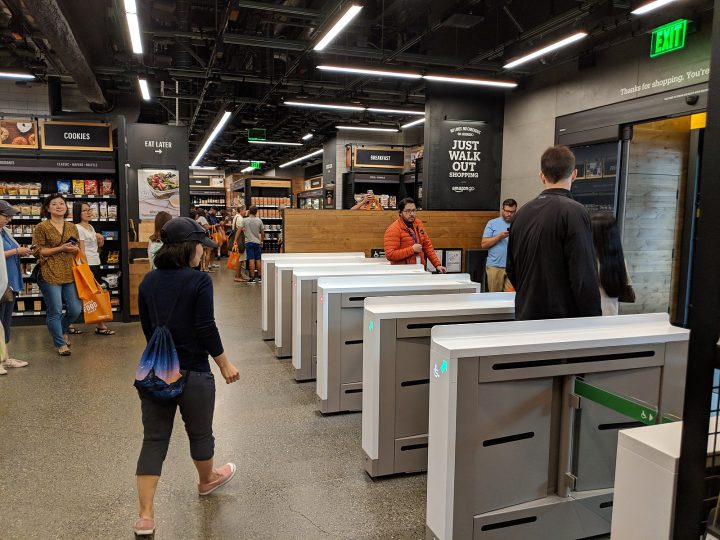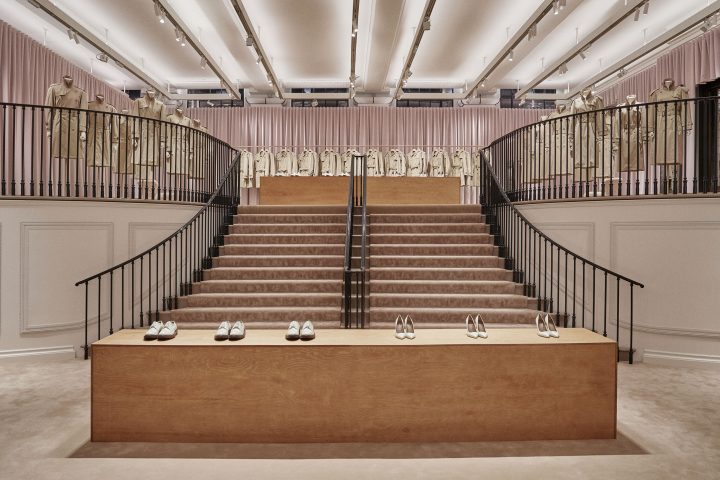The retail revolution
For thousands of years, hungry people have visited their local market, handpicked their fruit and veg, waited in a queue then traveled back home. Yes, the selection wasn’t as complex, but the experience was close to the same. The physical experience of going to the supermarket has (for the most part) remained basically unchanged. However, we’re finally seeing the revolution of commerce and retail – as the “world’s most relentless retailer” continues to raise the game.
The exponential rise in online shopping and the simultaneous rise in self-service in stores has created an opportunity to re-think the physical in-store shopping experience – and quickly. Amazon is therefore pioneering a new seamless shopping experience, where the customer is at the heart of all concerns and progressions. So, how exactly has the retail giant managed to turn this industry upside down – and translate their brand offer of seamless convenience, choice and speed online, into the physical experience? And what role does data play in all this, and what are the hesitations behind this new way of shopping?
A look into Amazon
This past year, delivery services have certainly become more central to our lives – serving our every need as we have been directed to stay at home. Although around 82% of us say we are now ‘comfortable’ with doing most of our shopping online, research has shown 4 out of 5 UK citizens still prefer to do their shopping in-person. The sensory experience of interacting with a product or person is irreplaceable for many people and so Amazon’s first physical food store satisfies these senses – with carefully chosen, reasonably priced own-brand products that the mega-brand feels it can pre-guess what we want. For example, choosing to add dairy-free alternatives to their coffee machines, specifically Oatly – a brand that has experienced an 88% growth in sales this past year. Another indication of the data driven, forward-thinking and responsive nature of the brand.
The outcome is their new Amazon Fresh Ealing store that is apparently driven by the demand for a more convenient and frictionless shopping experience. Free from queues, customers are able to grab what they want and just walk out… heralding a completely new concept in our retail world. But how does it work?

Exploiting the latest technology
This is all made possible by ‘Just Walk Out’ technology. First introduced in the States, it’s enabling a smoother user experience, leveraging the same types of technologies used in self-driving cars: computer vision, sensor fusion, and deep learning. In the store, you’re able to browse, touch various products, pick some up, and just walk out – without scanning a thing. This is made possible as hundreds of cameras monitor from above, whilst weight sensors detect missing items on the shelves. The use of this advanced technology has been the catalyst to create this highly frictionless and intelligent environment.
More tech = more data!
This new seamless, personalised experience wouldn’t be possible without lorry loads of data! Every customer is given an online identity, which allows Amazon to track their unique spending habits and better understand their target market. This influx of data is invaluable for brands like Amazon, as identifying these behaviours at scale gives them an important opportunity to alter their forecasts, stock the right amount of product (meaning less waste), and better predict supply chain forecasts. From a business point of view, it would be incredibly foolish to not make the most out of this free data; when it facilitates higher profit margins, upscaled productivity, and (expected) higher customer satisfaction.
With customers expecting more and more, companies like Amazon, thrive by predicting the customer’s needs and wants before they do themselves. It’s important to remember that it’s the data that is enabling this new personalise and frictionless experience. However, all is not simple – there may be many concerns or hesitations towards this new total surveillance experience. While many people prefer to stay oblivious, many customers want to know what’s happening with these records and how the analytics are being used. Staying one step ahead comes at a cost – and in this case, it’s at the expense of their privacy.
This opens up an ethical debate. How much should the system disclose about what it knows about our habits and interests, and how it’s using that information? As brands begin to play larger roles in our day-to-day lives, so does their responsibility. Companies like Amazon must be increasingly transparent with their internal processes – or they’ll risk losing customer trust.
So what’s next?
Physical grocery stores are undergoing a quiet revolution of their own as game-changing technology is finally reaching retail. We’ve already seen many food retailers and restaurants use this transition as an opportunity for innovation and reinvention. As shopping migrates online, physical stores will need to respond, in particular by turning shopping from a transaction into a pleasurable lifestyle activity. We expect queues will slowly disappear, as the experience of shopping becomes both more efficient and more inspiring. Burberry’s “Social Retail” store in Shenzhen is a nice example. It’s a truly interactive space of exploration, designed to inspire and entertain luxury audiences. QR codes, café menus, theme changing rooms showcase a new way to shop. The Burberry chief executive described the new store as making a big ‘shift in how we engage with our customers’.

However, in the meantime, as online shopping continues to rise, we’re expecting some retailers to respond to this shift by enhancing the shopper experience through digital and for others to be turning more of their physical locations into so-called “dark stores”, where online orders can be packed for pickup or delivery. The successful brands will have learned the major lesson of the pandemic; the need to be able to change your business model to meet changes in customer behaviours – and to do it quickly. It’s also paramount that companies find a balance between technology and human interaction, because although customers enjoy the convenience of an app or a chatbot – they still crave the human connection.
